There are plenty of reasons why you may need to know more about a dog’s pregnancy. You may be planning on breeding from your pooch or you may suspect that they have accidentally become pregnant and need to prepare for the unexpected event. You may have been asked to foster or adopt a pregnant pooch and want to be informed about what you have in store!
Your doggy’s experience with pregnancy will be very individual but some breeds are more likely to have problems than others. Some breeds have such a problem with pregnancy and whelping (giving birth to puppies) that only experienced breeders with expert veterinary back-up should even attempt it.
In general, smaller dogs are more likely to have more complications during pregnancy. You could expect a pure-bred Chihuahua to have more problems than a medium-sized cross-breed. The flat-faced (brachycephalic breeds) such as the French and English bulldogs, Shih Tzus and Boxers are highly likely to need a caesarean section. This means that it is vital that you can recognize the various stages of pregnancy in order to plan the best time for the surgery. Other breeds require screening procedures for particular conditions during pregnancy. The clear message is that it takes a lot of expertise and experience to be a responsible dog breeder!
To get you started, here is a basic guide to what you can expect from your doggy’s pregnancy.
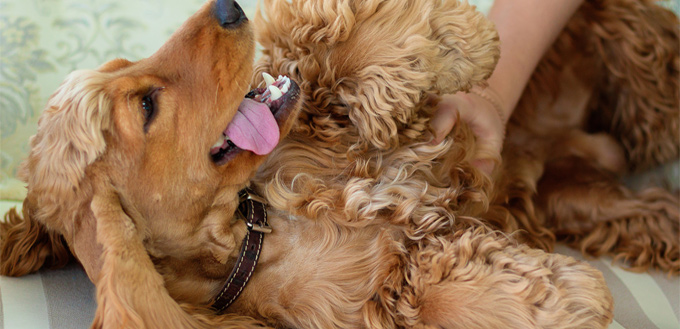
Reproductive Cycle in Dogs
In order to accurately track and monitor the pregnancy, you should know when your pooch got pregnant in the first place. Your vet may certainly ask you this when you visit them. You will need to understand the reproductive cycle of canines in order to determine the length of pregnancy and predict the whelping date. You can work out the date of conception by keeping track of when your bitch is in heat.
There are four stages to the oestrous cycle in canines which are:
- Proestrus
- Oestrus
- Diestrus
- Anestrus
You may be able to tell that your bitch is entering the reproductive phase of her cycle from her behaviour and physical signs around the genitals. When the genitals return to their normal state, the cycle is over and she may, or may not, be pregnant.
It is during the second stage (oestrus) that the bitch will be receptive to the male and will conceive. The oestrus cycle lasts for between three and 11 days. The reproductive cycle as a whole lasts up to 21 days and takes place around twice a year. Very large dogs may have only one reproductive cycle per year and very small dogs may have three. They start when your pooch is around six months old and reaches puberty. If your bitch has become pregnant, the gestation period for dogs is around nine weeks.
Detecting the Pregnancy
Once the cycle is over, you have the exciting task of determining if your pooch is pregnant. There are symptoms of pregnancy in dogs that you can look out for and there are tests that your vet can carry out to confirm your suspicions.
Symptoms of Pregnancy in Dogs
The very early signs of pregnancy are similar to that of humans. You may notice that her appetite is decreased and she may suffer from morning sickness around the third or fourth week. This is due to the massive hormonal changes that are taking place within her body as the embryo grows and the uterus gets bigger and prepares to receive the fertilized egg. You can help by feeding her smaller, more regular meals rather than one or two big ones. Always provide plenty of water and look out for signs of dehydration if vomiting is frequent.
There are likely to be behavioral changes as well. Some dogs will become stand-offish and reject your attention. Others become clingy and want to be with you all the time. She may have low energy levels and tire easily and this may be more apparent in working dogs. They should be allowed to rest.
Once the first month is over, the middle part of the pregnancy usually progresses with few problems. At this stage, she will be eating a lot and you will notice her belly beginning to grow, especially if she is one of the smaller breeds. If you or your vet weigh her, there will be obvious weight-gain. The nipples will become enlarged and the hair around the nipple area may be lost.
The final few weeks are accompanied by some typical nesting behaviour as she prepares for whelping. This starts around the sixth week and continues to the end of the pregnancy. The bitch will seek out a nice, cosy place to give birth. You can help to prepare it properly with a waterproof plastic sheet covered with comfortable towels. By the last week, her nipples will be larger and darker in colour. Just before whelping, some milky fluid may leak out.
Related Post: Best Dog Drying Towel
During the last week or so, her abdomen will feel very thick and firm. She may not want to move around much and her belly will sway beneath her as she walks around. When she is lying still, you may even be able to see the pups wriggling inside her. She may appear a bit moody and short-tempered. This is just a sign that she is entering the final stages of her pregnancy and that the pups will be on their way soon!
The thing that you will find most surprising about a dog pregnancy is that every happens very fast. Each stage may only last for a few days. For example, a woman can suffer from morning sickness for six weeks whereas is a female dog, this often lasts for just a few days.
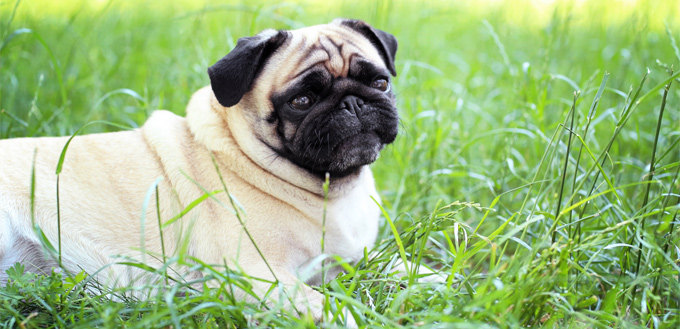
Confirming the Pregnancy
There are various tests that your vet can carry out to confirm that your pooch is pregnant so it is best to consult them as soon as you have your suspicions. If possible, tell the vet exactly when your bitch was on heat so they know what stage of pregnancy they are trying to detect.
The tests that your vet can use to diagnose canine pregnancy if you ask them ‘Is my dog pregnant?’ are:
- Hormonal tests. From day 30 of the pregnancy, a hormone called relaxin can be detected in the bloodstream. It is only present in pregnant bitches are therefore confirms pregnancy. Prior to 30 days, the result will be negative so it is no use for detecting an early pregnancy. It is possible to buy a dog pregnancy test for use at home which will test for relaxin. However, if you are tempted to use a human pregnancy test on your dog’s urine – don’t bother. They do not work on dogs so you will be wasting your money!
- Palpation of the abdomen. Between 21 and 35 days of gestation (this is around three or four weeks), it is possible to feel the fluid-filled sacks that have formed around the growing pups. Palpation should only be carried out by a vet or by a skilled and experienced breeder because it is possible to cause harm to the pups and the mother. After the first month of pregnancy, the sacks lose their distinctive shape and feel more like a layer of fat.
- Abdominal X-ray. This is another technique that is most useful later in pregnancy. It will give you an idea of how many pups you can expect at whelping. Prior to around day 45, the skulls and spines of the pups will not be large enough to be visible on the X-ray. It gives a good indication of the size of the pups which helps the vet to plan an elective caesarean if that is what is planned.
- Abdominal ultrasound. This is the best dog pregnancy test option for finding out if your bitch is pregnant a few weeks after they have mated. It is used at around 25 to 35 days of gestation. An ultrasound dog pregnancy test will detect the presence of the foetuses and detect heartbeats to confirm that the pups are alive. It is possible that you have falsely diagnosed the pregnancy yourself and that the abdominal swelling is due to a condition such as pyometra (an infection of the uterus). An ultrasound scan will detect this. It is also very good at calculating the exact age of the foetuses and gives a good prediction of the whelping date.
It is important that you find the answer to the question ‘Is my dog pregnant?’ and that you establish at what stage the pregnancy is. This enables you to look after the mother’s health and arrange the correct nutrition and veterinary care for her.
Complications in Pregnancy
Not all dog pregnancies are welcome events and not all pregnancies go according to plan. Here are some of the issues that can arise.
- Phantom pregnancy
Some dogs suffer a phantom pregnancy which is also sometimes called a pseudopregnancy. Your female dog will show some or all of the dog pregnancy symptoms detailed above even though they are not actually pregnant. Phantom pregnancies do rarely occur in other animals but they are more common in dogs.
The situation is very puzzling for owners who know that their bitch has not mated. It can also be very disappointing if you are planning a pregnancy and then find out that there is not one. The situation is not dangerous for the females health and the symptoms will eventually die down without treatment. However, the female needs to be discouraged from stimulating their own milk supply by licking their nipples and your vet can prescribe synthetic hormones to resolve the symptoms if needed.
- Unwanted pregnancy
The best option is always to prevent pregnancy in the first place but sometimes, despite an owner’s best efforts, an unwanted pregnancy arise. You may decide that the best option is to terminate the pregnancy and you need to consult a vet as quickly as possible.
Injectable oestrogens can be given very soon after mating and they will terminate any pregnancy that has occurred. However, owners are not always certain when mating took place so the timing can be difficult. The injections can also cause complications such as bone marrow suppression, pyometra.
The alternative is prostaglandin F2 Alpha which is a naturally occurring hormone in dogs. Some mild side effects may occur such as panting, trembling and diarrhoea. Some vets prefer to administer dexamethasone but it can cause panting, excessive thirst and excessive urination.
- Spontaneous abortion
Some dog pregnancies end with spontaneous abortion and this is signalled by heavy vaginal bleeding and possibly the foetus coming out too. There are many reasons for this but one of the most common is a hormonal imbalance. Veterinary attention is required immediately.
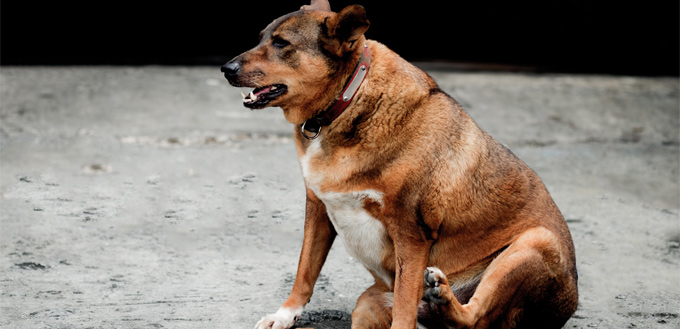
Dog Pregnancy Symptoms Week by Week
Because the canine pregnancy is so short (an average pregnancy can range from 56 to 70 days depending on the breed), the pups develop rapidly in the womb and the mother dog passes through the stages very quickly. Here are the dog pregnancy symptoms week by week:
Early pregnancy: Week One
During the very early stages, there will be little to notice. Watch out for any signs of infection that could have been contracted during mating. The fertilized egg starts off as a single cell but has divided to 16 cells by the end of the first week. It will soon move down into the uterus (womb). Some major hormonal shifts will be starting in the Mom’s body.
The change in hormones can cause some morning sickness, a lack of appetite and some light pink discharge from the vagina which is perfectly normal. You should feed the mother as normal or give her smaller, more regular meals. You could add a nutritional supplement if your vet agrees it is necessary but there is no need to increase the quantity of food at this stage. Do not use any flea treatments or worming medication at this time. Carry on with normal exercising and grooming.
Related Post: Dog Food for Pregnant Dogs
Week Two
This is a crucial week for the pregnancy. During week two, the fertilised egg will enter the uterus where it will grow into a pup. From this stage on it is referred to as an embryo. The cells are rapidly dividing and growing and the embryo will have 64 cells by the end of the week. Once inside the uterus, the embryo attaches itself to the walls which have been thickened for this purpose. The placenta starts to develop and this is the organ that will provide the developing embryo with oxygen and nourishment over the coming weeks.
The Mom may still have some morning sickness but you can carry on with your usual feeding and exercising regime.
Week Three
This is a sensitive time for the pregnancy and is the stage where birth defects can arise. The basic anatomical structures of the pup are beginning to develop. The eyes, spine, legs, and paws are beginning to form. At the end of week three, the embryo is around 5 mm long.
There may be some increase in appetite in the mother. There is no need to increase food intake unless you notice she is losing weight in which case you should talk to your vet right away. In general, weight gain during pregnancy should not be more than 10 per cent.
Week Four
At this stage, the embryo increases in size to 10 mm. By day 25, the pregnancy is well underway and you should visit the vet for a formal check-up and assessment of the pregnancy. The pregnancy may be confirmed using an ultrasound scan. This is an exciting time because you will also be given an idea about how many pups you can expect. This is only an estimate at this stage though. If there are any problems with the pregnancy, they can be spotted and monitored from now on. The relaxin pregnancy test can be used from day 30 of the pregnancy but will not give an indication of how many pups there are.
The pup embryos are developing the basic structure of the eyeball so the beginnings of the lens, cornea, and retina are in place. The legs and paws are more recognizable as distinct structures.
This is also the stage when your pregnant bitch needs to start making some adjustments to her activity to protect the developing pups. Working dogs should be rested. Companion dogs should not engage in rough play as they could get over-tired and strain themselves.
Week Five
Week five marks the end of the first stage of the development of the pups which is called embryogenesis. From now on (after day 35), the developing pup is no longer referred to as an embryo. It is now a foetus.
The toes, whisker buds, and claws are starting to form and the foetus actually starts to look like a pup! The organs are also starting to form and the weight of the foetus increases dramatically by a huge 75 percent.
We are now at the mid-pregnancy stage and all being well, the Mom will be blooming. The initial tricky stage is behind her. You still need to avoid any type of strenuous exercise including rough play and give her plenty of opportunities to rest.
There will be some weight gain at around this time and you may need to increase her food intake. The weight gain should, however, be gradual. Rapid changes in weight are not a good thing.
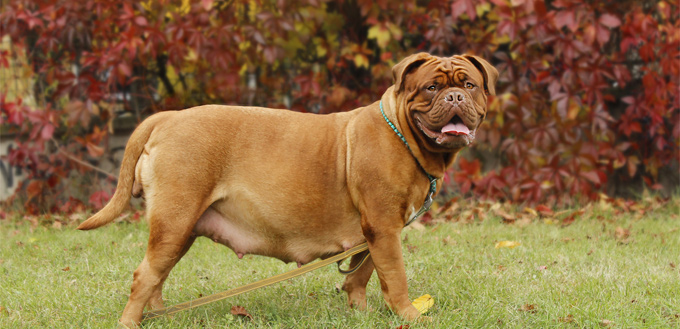
Week Six
Things speed up during week 6 which marks the start of the third stage of gestation. The foetus is developing rapidly and now has clear toes, whiskers, internal organs and genitals. If an ultrasound scan is carried out now, your vet will be able to tell you the gender of the pups and show you the hearts beating.
The foetus really does look like a dog and the skeleton is visible. There is considerable weight gain at this stage. If you have not already done so, you need to increase the Mom’s intake of nutrients. If she has a decreased appetite, you can get around this by feeding her a food that has a higher energy and protein value. She may have a preference for smaller meals through the day rather than one or two big meals. This is because the growing uterus will be pressing on her digestive system and making her feel full-up quickly.
Related Post: High Protein Dog Food
Many dog owners find that puppy food is the best for pregnant dogs because it is very easy to digest and has all the nutrients to support a pregnancy. Alternatively, some vets may advise you to add a nutritional supplement such as multi-vitamins to their food.
You May Also Like: Supplements for Pregnant Dogs
Week Seven
By the end of week seven, the foetus has hair and its bones are becoming more solid. The time has come to get ready for the birth because the pups are going to put in an appearance in less than a fortnight! A check-up at the vet is an excellent idea to make sure that there are no parasites such as intestinal worms that could infect the puppies as they are being born and cause health complications.
You may notice that your female dog is shedding a lot of hair from her belly and especially around the nipples. This is perfectly normal and nothing to worry about.
Puppies can arrive early so you must have an appropriate place ready for her to whelp if you have not already done so. It needs to be warm and comfortable it should be positioned in a place where she will not be disturbed. She will need to use this place for several weeks after giving birth so choose somewhere that you don’t need to use very often! However, be warned, your choice of whelping location may not be the same as your bitch’s. She may choose somewhere entirely different so watch her carefully from now on.
A simple cardboard box is fine for whelping but if you are planning on setting up as a breeder, you may want to invest in a reusable helping box.
Week Eight
At week eight, the skeleton of the foetus is completely solid. If you really need an x-ray to check how many pups there are, this is the time to do it. It is not necessary though. The organs and all of the tissue are formed. The foetus continues to mature and gains weight.
The Mom dog will begin to lactate around now. The first milk is called colostrum and it contains exactly the right nutrients for the newborn ups. This usually happens seven days before they give birth. If they do not start to lactate at this stage, have a word with your vet. It may be necessary to find another mother dog or use artificial alternatives. This is the time to start arranging that.
There are some grooming preparations that you have to do prior to whelping to help it to run smoothly. This is usually done in week eight or nine. It is a good idea to give the mother-to-be a gentle groom. They may be more relaxed in week eight which makes it easier to do. Trimming the hair very carefully around the vulva and teats is also a good idea.
Week Nine
This can be a very tricky week! Your Mum dog will be irritable and will appear anxious. She will be actively searching for a quiet place to nest so encourage her towards the whelping box that you have prepared. Get ready for a lot of washing, unless you are planning on throwing the towels from the whelping box away. She will not want to eat much and her abdomen will appear less swollen as the puppies move down into the pelvis ready for birth.
It’s a good idea to check her temperature at regular intervals. When you notice that it drops to around 1°C it means that the onset of labour is imminent. However, if she gets distressed when you try to take her temperature you should abandon the idea. Keep the area around the whelping box at around 30°C because newborn pups cannot maintain their temperature.
Related Post: Best Dog Thermometers
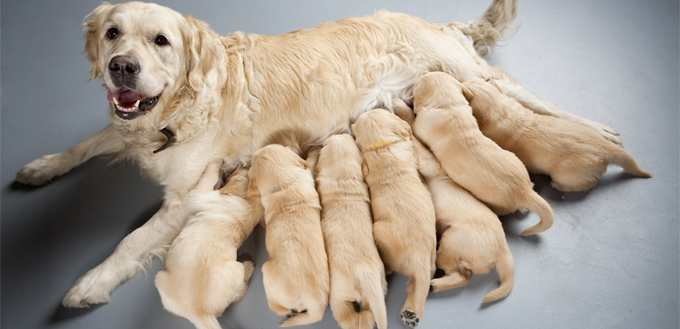
Labour
The onset of labour is the last and most exciting stage of the pregnancy. You will know that you have reached this stage when the female:
- Becomes very restless and shies away from human contact
- Repeatedly returns to the nesting box
- Refuses to eat at all or seems off their food
- Vomits
- Paces around and licks herself
- Pants even though the room is not hot
- Has a clear vaginal discharge
With some basic knowledge about the symptoms and stages of pregnancy in dogs, you can ensure that your pregnant female is looked after correctly and gets all the care she needs. This gives you the best chance of having a safe litter of gorgeous pups!
Note: The advice provided in this post is intended for informational purposes and does not constitute medical advice regarding pets. For an accurate diagnosis of your pet's condition, please make an appointment with your vet.







